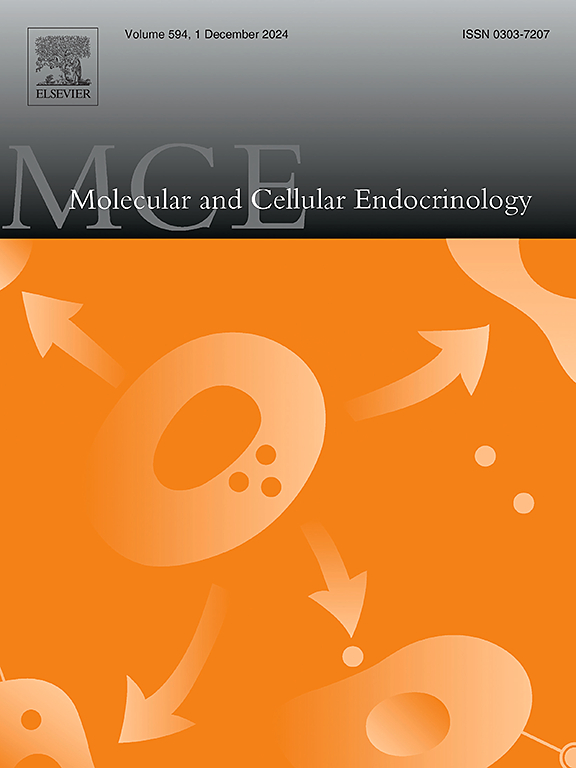Exploring the functional, protective, and transcriptomic effects of GIP on cytokine-exposed human pancreatic islets and EndoC-βH5 cells
IF 3.6
3区 医学
Q2 CELL BIOLOGY
引用次数: 0
Abstract
Immune-mediated beta-cell destruction and lack of alpha-cell responsiveness to hypoglycaemia are hallmarks of type 1 diabetes pathology. The incretin hormone glucose-dependent insulinotropic polypeptide (GIP) may hold therapeutic potential for type 1 diabetes due to its insulinotropic and glucagonotropic effects, as well as its cytoprotective effects shown in rodent beta cells. To further increase our understanding of GIP's effects on human beta cells, we here examined the functional, protective, and transcriptomic effects of GIP in human EndoC-βH5 beta cells and isolated human islets in the presence or absence of proinflammatory cytokines (interferon (IFN)-γ ± interleukin (IL)-1β) as a mimic of type 1 diabetes.
GIP dose-dependently augmented glucose-stimulated insulin secretion from EndoC-βH5 cells and increased insulin and glucagon secretion from human islets at high and low glucose concentrations, respectively. The insulinotropic effect of GIP in EndoC-βH5 cells was abrogated by KN-93, an inhibitor of calcium/calmodulin-dependent protein kinase 2 (CaMK2). GIP did not prevent cytokine-induced apoptosis in EndoC-βH5 cells or human islets, and GIP did not protect against cytokine-induced functional impairment in EndoC-βH5 cells. GIP treatment of human islets for 24 h had no effects on the transcriptome and did not modulate cytokine-induced transcriptional changes. However, GIP augmented IL-1β + IFNγ-induced secretion of interleukin (IL)-10 and c-c motif chemokine ligand (CCL)-2 from human islets while decreasing the secretion of c-x-c motif chemokine ligand (CXCL)-8. In EndoC-βH5 cells, GIP reduced IFN-γ-induced secretion of tumor necrosis factor (TNF)-α, IL-2, IL-6, and IL-10 but increased the secretion of CXCL8, CCL2, CCL4, and CCL11.
In conclusion, our results suggest that the insulinotropic effect of GIP is CaMK2-dependent. Furthermore, our findings indicate that GIP neither exerts cytoprotective effects against cytokines nor modulate the transcriptome of human islets. GIP may, however, exert selective modulatory effects on secreted inflammatory factors from cytokine-exposed beta cells and islets.
探索 GIP 对细胞因子暴露的人类胰岛和 EndoC-βH5 细胞的功能性、保护性和转录组学效应。
免疫介导的β细胞破坏和缺乏α细胞对低血糖的反应是1型糖尿病病理的标志。肠促胰岛素激素葡萄糖依赖型胰岛素多肽(GIP)可能具有治疗1型糖尿病的潜力,因为它具有促胰岛素和促胰高血糖作用,以及在啮齿动物β细胞中显示的细胞保护作用。为了进一步了解GIP对人β细胞的作用,我们在此研究了GIP对人内啡肽-βH5 β细胞和分离的人胰岛在促炎细胞因子(干扰素(IFN)-γ±白细胞介素(IL)-1β)存在或不存在的情况下的功能、保护和转录组效应。在高和低葡萄糖浓度下,GIP分别增加了葡萄糖刺激的内啡肽-βH5细胞的胰岛素分泌,增加了人胰岛的胰岛素和胰高血糖素分泌。GIP在EndoC-βH5细胞中的胰岛素促胰岛素作用被钙/钙调素依赖性蛋白激酶2 (CaMK2)抑制剂KN-93所消除。GIP不能阻止细胞因子诱导的EndoC-βH5细胞或胰岛细胞凋亡,也不能防止细胞因子诱导的EndoC-βH5细胞功能损伤。GIP治疗人胰岛24小时对转录组没有影响,也没有调节细胞因子诱导的转录变化。然而,GIP增加了IL-1β + ifn γ-诱导的人胰岛白细胞介素(IL)-10和c-c基序趋化因子配体(CCL)-2的分泌,而降低了c-x-c基序趋化因子配体(CXCL)-8的分泌。在EndoC-βH5细胞中,GIP降低了IFN-γ诱导的肿瘤坏死因子(TNF)-α、IL-2、IL-6和IL-10的分泌,但增加了CXCL8、CCL2、CCL4和CCL11的分泌。综上所述,我们的研究结果表明,GIP的胰岛素调节作用是camk2依赖性的。此外,我们的研究结果表明,GIP既没有对细胞因子发挥细胞保护作用,也没有调节人类胰岛的转录组。然而,GIP可能对细胞因子暴露的β细胞和胰岛分泌的炎症因子发挥选择性调节作用。
本文章由计算机程序翻译,如有差异,请以英文原文为准。
求助全文
约1分钟内获得全文
求助全文
来源期刊

Molecular and Cellular Endocrinology
医学-内分泌学与代谢
CiteScore
9.00
自引率
2.40%
发文量
174
审稿时长
42 days
期刊介绍:
Molecular and Cellular Endocrinology was established in 1974 to meet the demand for integrated publication on all aspects related to the genetic and biochemical effects, synthesis and secretions of extracellular signals (hormones, neurotransmitters, etc.) and to the understanding of cellular regulatory mechanisms involved in hormonal control.
 求助内容:
求助内容: 应助结果提醒方式:
应助结果提醒方式:


